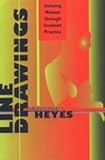Line Drawings : Defining Women through Feminist Practice / Cressida Heyes.
Material type: TextPublisher: Ithaca, NY : Cornell University Press, [2018]Copyright date: ©2000Description: 1 online resource (240 p.)Content type:
TextPublisher: Ithaca, NY : Cornell University Press, [2018]Copyright date: ©2000Description: 1 online resource (240 p.)Content type: - 9781501725623
- 305.42/01 21
- HQ1190 .H49 2000
- online - DeGruyter
| Item type | Current library | Call number | URL | Status | Notes | Barcode | |
|---|---|---|---|---|---|---|---|
 eBook
eBook
|
Biblioteca "Angelicum" Pont. Univ. S.Tommaso d'Aquino Nuvola online | online - DeGruyter (Browse shelf(Opens below)) | Online access | Not for loan (Accesso limitato) | Accesso per gli utenti autorizzati / Access for authorized users | (dgr)9781501725623 |
Browsing Biblioteca "Angelicum" Pont. Univ. S.Tommaso d'Aquino shelves, Shelving location: Nuvola online Close shelf browser (Hides shelf browser)

|

|

|

|

|

|

|
||
| online - DeGruyter New Rules for a New Economy : Employment and Opportunity in Post-Industrial America / | online - DeGruyter The Family and the Nation : Gender and Citizenship in Revolutionary France, 1789–1830 / | online - DeGruyter Authoritarianism in Syria : Institutions and Social Conflict, 1946–1970 / | online - DeGruyter Line Drawings : Defining Women through Feminist Practice / | online - DeGruyter The Grammar of Politics : Wittgenstein and Political Philosophy / | online - DeGruyter Homeland Calling : Exile Patriotism and the Balkan Wars / | online - DeGruyter Peasant Metropolis : Social Identities in Moscow, 1929–1941 / |
Frontmatter -- Contents -- Acknowledaments -- Introduction: Philosophy and Purity -- 1. Essentialism and Anti-Essentialism in Feminist Theory -- 2. Feminist Method and Generalizing about Women -- 3. Philosophical Investigations (in a Feminist Voice) -- 4. "Look and See": Gilligan and Feminist Research -- 5. Between Theory and Practice: MacKinnon and Feminist Activism -- Conclusion: "Back to the Rough Ground!" -- Notes -- Bibliography -- Index
restricted access online access with authorization star
http://purl.org/coar/access_right/c_16ec
At the heart of feminist theory lies the seemingly intractable issue of essentialism. Feminism has thus far failed to transcend critiques of essentialism and currently offers only two inadequate positions against it. One response reifies the category "women," representing the experience of oppression of privileged women as archetypal for feminism, and the other denies the category because it unjustly overgeneralizes, thus undercutting the possibility of a robust theory of gender oppression. To spur anti-essentialist methods and practice around such issues as sexual violence, feminist theory crucially needs a constructive and politically powerful strategy for defining women.Cressida J. Heyes deftly elucidates and then travels beyond the essentialism debates to rescue the efficacy of feminist theory for activism and research. She offers a genealogy of essentialism, specifically as it applies to the work of Carol Gilligan and Catharine MacKinnon, and employs a Wittgensteinian approach to feminism that understands similarities between women as family resemblances and political decisions about inclusion and exclusion as contextual and purposive. Line Drawings argues for an anti-essentialist method that enables generalizing feminist discourse but insists on paying close attention to the operations of power in constructing claims about women. This is a fresh and vitally important step past stymied debate on what is arguably the most pressing issue in cross-disciplinary feminist theory.
Mode of access: Internet via World Wide Web.
In English.
Description based on online resource; title from PDF title page (publisher's Web site, viewed 26. Apr 2024)


